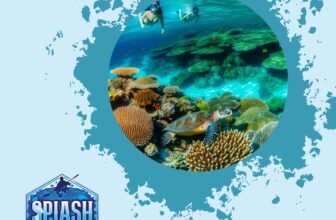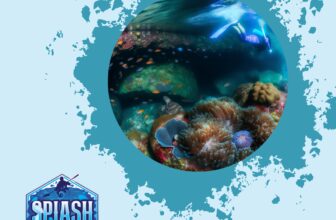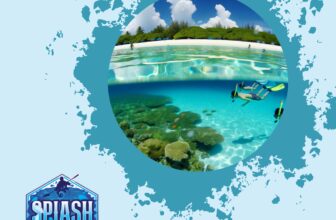
Whether you're a seasoned diver or just getting started on your underwater adventures, one thing remains constant — the ocean is home to a myriad of marine creatures, many of which can be venomous. Understanding how to identify these creatures and knowing the right first aid procedures is crucial for diver safety.
This guide aims to equip you with practical knowledge on marine venomous creature safety, helping you enjoy your dives with confidence.
Introduction
Diving into the underwater world offers unparalleled excitement and a chance to witness marine life in its natural habitat. However, alongside the beauty, it's essential to recognize the potential dangers that the ocean holds, particularly from venomous marine creatures. For beginner divers and those contemplating entering this exhilarating activity, understanding these risks is a pivotal step.
Knowing about venomous marine creatures isn't just about avoiding serious injuries, it's also about ensuring that each dive is a safe, memorable experience. Equipped with the right knowledge, divers can venture into the depths with confidence, appreciating the wonders beneath the waves while being prepared to handle any adverse encounters effectively.
Understanding Marine Venomous Creatures
The underwater world is fascinating but can be hazardous if you're not aware of its inhabitants. Knowing how to identify venomous marine creatures is not just about avoiding danger — it's also about appreciating the richness of marine biodiversity safely.
Types of Venomous Species
Diving introduces you to a variety of marine life, some of which can deliver venomous stings or bites. Here are the primary categories:
Venomous Fish
-
Lionfish:
- Recognizable by their striking, zebra-like stripes and elongated fins.
- Venomous spines can cause severe pain and swelling.
-
Stonefish:
- Often camouflaged and hard to spot.
- Potent venom that can lead to intense pain and even paralysis if not treated promptly.
-
Scorpionfish:
-
Similar to stonefish in appearance and venom.
-
Well-camouflaged and spiny body.
Venomous Invertebrates
-
Jellyfish:
- Species like the Irukandji or Portuguese Man O' War can deliver painful, sometimes life-threatening stings.
-
Sea Urchins:
- Spines can penetrate skin, releasing venom that causes pain and swelling.
-
Cone Snails:
-
Beautiful but deadly, their venom has the potential to be fatal.
- Blue-ringed Octopus:
- Small and seemingly harmless, but one bite can inject enough venom to paralyze and kill a human within minutes.
Other Marine Hazards
-
Box Jellyfish:
- Known for their transparent bodies and highly venomous tentacles.
-
Stingrays:
- Barbs can cause deep wounds and deliver venom that results in severe pain.
Importance of Identification
Being able to identify venomous creatures is not just for hobbyists but a critical safety skill for divers. Here’s why:
-
Prevention:
- Recognizing these creatures helps you take preventive measures, such as maintaining a safe distance and avoiding any form of contact that could trigger a defensive reaction.
-
Emergency Response:
- Accurate identification is crucial for administering the correct first aid. Different species require different treatment approaches.
-
Environmental Respect:
- Understanding and respecting the marine environment promotes safer interactions and conservation efforts.
Learning and Preparation
-
Study Resources:
- Beginner divers can start by studying images and descriptions of common venomous species in their dive locations.
-
Guidance from Experts:
- Dive instructors and guides can provide valuable insights into local marine life.
Conclusion
Remember, a significant part of safe diving is staying observant and maintaining a respectful distance from all marine creatures. By educating yourself about venomous creatures, you safeguard your diving experience and contribute to the broader diving community's efforts to enjoy the seas responsibly and sustainably.
Safety Tips for Divers
Before the Dive
-
Research: Know what you're diving into. Investigate the native marine life of your chosen dive spot. Understanding the local ecosystem can give you an edge, enabling you to identify potential threats before they become a problem.
-
Training: Enroll in marine life identification and first aid courses specifically tailored for divers. This will not only make you a more knowledgeable diver but also equip you to handle emergencies more effectively.
-
Dive Gear: Ensure your dive kit is up to par. Protective gear such as gloves, full-body wetsuits, and reinforced dive boots can provide a solid first line of defense against venomous stings and bites.
During the Dive
-
Stay Alert: The underwater world is mesmerizing, but it's crucial to remain vigilant. Continuously scan your surroundings to spot hazards before they reach you. Your situational awareness is your lifeline.
-
Maintaining Distance: Keep a respectful gap between yourself and marine creatures. Touching or approaching too closely can provoke defensive behaviors in venomous species, increasing the risk of injury.
-
Buddy System: Never dive alone. Having a partner increases your safety exponentially, providing an extra set of eyes and someone to help in case of an emergency.
After the Dive
-
Decontamination: Post-dive rituals should include a thorough cleaning of your equipment. This helps in removing any venomous residues and minimizes the risk of skin irritation or secondary stings.
-
Monitoring: Pay close attention to your body post-dive. If you notice any unusual symptoms like pain, swelling, or difficulty breathing, seek medical attention immediately. Early detection of venomous reactions can be life-saving.
First Aid for Venomous Encounters
General First Aid Principles
When you or someone in your diving group encounters a venomous marine creature, the first response is crucial. Here's what you should do immediately:
Assess the Situation
- Check for Consciousness: Ensure the victim is awake and responsive.
- Monitor Breathing and Circulation: Look for any difficulties in breathing or signs of shock.
Notify Authorities
- Inform Dive Personnel: Alert the boat crew or dive guides immediately.
- Contact Emergency Services: Have someone call for medical assistance as soon as possible.
Basic Care
- Clean the Wound: Use saline or fresh water to gently rinse the wound.
- Control Bleeding: Apply pressure with a clean cloth if there is any bleeding.
Specific First Aid Procedures
Different marine creatures require specific first aid responses. Below are guidelines for common venomous encounters.
Fish Stings (e.g., Lionfish, Stonefish)
- Hot Water Immersion: Submerge the affected area in hot (but not scalding) water for 30 to 90 minutes. The heat can help to alleviate pain by breaking down venom proteins.
- Remove Spines: Use tweezers to carefully extract any visible spines. Avoid breaking them further into the skin.
Jellyfish Stings
- Rinse with Vinegar: Douse the affected area with vinegar to neutralize venom. Avoid using fresh water as it can trigger stinging cells.
- Remove Tentacles: Utilize tweezers or gloved hands to gently remove any remaining tentacles. Do not rub the area, as this can cause additional venom release.
Sea Urchin Injuries
- Remove Spines: Carefully extract spines using tweezers, ensuring you do not push them further into the skin.
- Soak Area: Immerse the injured area in hot water to help ease pain. Water should be as hot as the victim can tolerate without causing burns.
Cone Snail and Blue-ringed Octopus
- Pressure Immobilization: Apply a pressure bandage around the wound site and immobilize the limb to slow the spread of venom.
- Seek Immediate Medical Attention: These stings can be extremely dangerous. Prioritize getting professional medical help as quickly as possible.
By following these first aid procedures, you can manage immediate care effectively and potentially save lives. Remember, timely and correct first aid is often the key to managing serious injuries in the marine environment.
Prevention and Preparedness
Regular Training and Drills
Getting familiar with first aid is just as crucial as knowing your diving techniques. Regularly participating in first aid training sessions is essential for both new and experienced divers. This knowledge ensures that you're not only able to identify urgent medical issues but can also take immediate action until professional help arrives. Make it a habit to partake in these training sessions and refresh your skills periodically. Don't just assume you’ll remember what to do when stress levels are high; regular practice makes sure that the steps become second nature.
Safety drills should also be part of your routine. These drills can range from simulating a venomous encounter to practicing evacuation procedures. The more often you run through these scenarios, the more effective you'll be when a real emergency happens. Encourage your dive buddies to join in too. Remember, a well-prepared team is a safe team.
Stay Informed
The ocean is dynamic, with conditions and the presence of marine life constantly changing. That makes staying informed a necessity rather than just good advice. Utilize reputable resources to keep yourself updated on the types of marine hazards specific to your dive locations. The more you know, the better you can prepare.
Make it a point to refer to trusted online platforms for accurate and current information. Websites such as Splash Spiral and Diving Resources offer detailed guides and updates on marine environments and potential hazards. Dive shops and local diving communities can also provide valuable insights and tips relevant to your dive sites. Combining current, reliable information with regular training significantly boosts your readiness and confidence underwater.
By integrating these practices into your diving routine, you're not just safeguarding yourself but also contributing to a more informed and safety-conscious diving community.
Conclusion
Recap the importance of marine venomous creature safety and first aid:
Navigating the underwater world safely requires more than just physical capabilities and technical skills; it demands a thorough understanding of the marine environment, especially when it comes to identifying and dealing with venomous creatures. Knowing how to recognize these potentially dangerous marine inhabitants and applying the appropriate first aid measures can prevent serious injuries and save lives.
Encourage continuous learning and preparedness to ensure safe and enjoyable dives:
Diving is an exhilarating activity that offers countless rewards, from witnessing the beauty of marine life to achieving a sense of personal accomplishment. Nevertheless, preparedness is key. Taking the time to educate yourself on marine hazards, consistently refreshing your first aid skills, and adhering to safety protocols make all the difference. The more informed and prepared you are, the more confidently you can explore the ocean's wonders without compromising your safety.
Direct readers to additional resources for further knowledge and training:
For continued growth in your diving knowledge, make use of the various resources available online. Websites like Splash Spiral and Diving Resources offer valuable information and updates on marine safety and diving practices. Stay informed, dive smart, and keep the ocean adventure exhilarating yet safe by continuously expanding your knowledge base.
By familiarizing yourself with the venomous creatures of the marine world and understanding the necessary first aid protocols, you can significantly enhance your safety and confidence as a diver. Stay informed, stay cautious, and enjoy the beautiful underwater experiences that await you.







